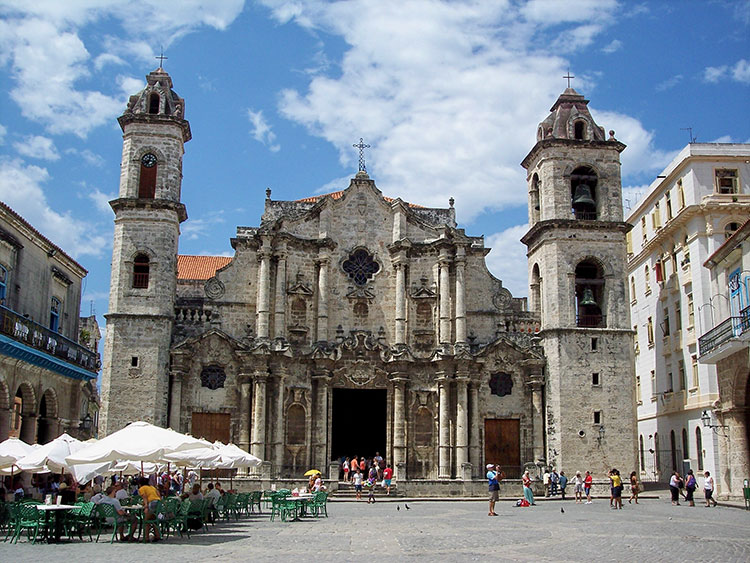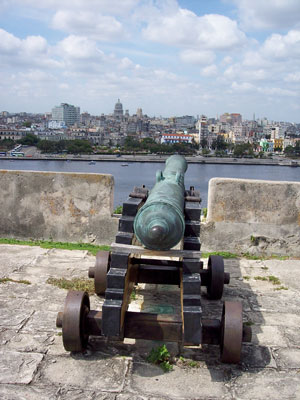Havana — the sea change
This item appears on page 63 of the November 2013 issue.
(1 of 3 parts on Cuba)
As I breezed through Customs at the Havana, Cuba, airport, the relaxed vibe felt very different than it did on my first trip to the island, in 2010. This feeling proved to be an accurate barometer for the whole of my April 2013, 12-day visit to Havana and eastern Cuba hosted by the Grand Circle Foundation.
Operating under a license from the US government’s restriction-laden People to People program, our “Cuba: Music, Culture & the Roots of Revolution” tour provided nonstop opportunities for in-depth interactions with Cubans in a plethora of settings.
The operating license required, each day, a full schedule of contact with the Cuban people. Meeting this requirement resulted in a pace that, at times, perhaps can best be described as “touring on steroids.” One side effect was less free time than some might prefer for self-guided exploring or just relaxing and recharging batteries.
Later in this 3-part report, I’ll speak directly to the thorny issue of US policy in regard to Americans traveling to Cuba as tourists.
The good news
What a difference three years can make. Since 2010, there has been a marked relaxation by the Cuban government of the rules that prohibited Cuban citizens from owning and operating private businesses.
In particular, scores of new paladares (restaurants in converted private homes) are opening. We had the opportunity to dine in several of these in both Havana and eastern Cuba and generally were very impressed with the quality of both the meals and service.
We learned while in Havana that the Cuban government is actively engaged in a program of turning many government-owned small businesses over to managers or other long-term employees to operate as their own. The new owners pay the government nominal fees to rent the commercial properties, then run the businesses, hiring and firing employees and paying taxes on any profits.
In both words and actions, it seems apparent that Cuba’s government has finally accepted the necessity of active, profitable private enterprise as an all-important step in reversing the clear failure of its long-imposed communist economic model. The force of this sea change appears to be irreversible.
It is noteworthy that economists representing both American and Cuban interests agree that Cuba needs a constant rate of progressive transformation. The challenge is to rapidly create new economic opportunities for the Cuban people while avoiding changes so massive and immediate that the economy would be thrown into chaos.
An awareness of the above dynamic is helpful to visitors hoping to glean an understanding of the exciting changes taking place across the island.
Havana on the full shell
Our Havana touring consisted of true cultural immersion in terms of our group’s continuous behind-the-scenes interactions with the Habaneros. Indications of Cuba’s economic awakening were ever present.
In Havana, we enjoyed educational walking tours in different parts of the city, a visit to a silk-screen workshop, and lectures by prominent Cuban architects and urban planners. We also had a heartwarming, in-depth tour of an inspiring, progressive senior center.
We were treated to private performances by an angelic-sounding women’s choir, a modern dance troupe and a prominent Cuban jazz group. Music and dance were also part of our amazing evening at the Muralando Community Development Project, which is located in a former slum neighborhood. Their impressive new community center is housed mostly in a restored, old circular water tank.
We toured Havana’s huge Colon Cemetery and also were guests at a dominoes parlor, where we gained game skills that would serve us well on numerous occasions during our journey through Cuba. It seems all Cubans play dominoes.
The joyous constant of our time in both Havana and eastern Cuba was the unrestricted opportunity to interact with our Cuban hosts in such dramatically varied settings.
Asking Uncle Sam
Most of us really appreciated the opportunity for a private and transparent debriefing with a US consular official at the American Interests Section of the Swiss Embassy in Havana. This facility functions essentially as an American Consulate in a convoluted agreement with the Swiss government and Cuba. Don’t ask!
Making no attempt to rationalize, justify or defend the continuing embargo of Cuba by the United States government, the personable official answered all our questions and suggested that those who wish to have the US normalize relations with Cuba sooner, rather than later, should share that opinion with their elected representatives.
Transparency reigns
Easily one of the most impressive facets of our Cuba sojourn was that everyplace we visited, we were invited to ask any and all questions regarding the lives of the people and even their feelings about past and present Cuban government policies.
There were no taboo subjects, and a general feeling of moderate optimism seemed to prevail regarding current economic trends and predicted changes. This was a very distinct and positive change from the state of affairs during my previous visit to the island three years earlier. My advice — go now!
Before you go
The cost of the tour of Havana and eastern Cuba was $4,395-$4,995 per person, double occupancy, land only, with a single supplement of $695.
For information concerning Cuba itinerary options, contact Grand Circle Foundation (347 Congress St., Boston, MA 02210; 800/859-0852).
Keck's Beyond the Garden Wall
If the resilient Cubans can progressively shed the chains of the past yet retain the positive modeling of full literacy, enviable health care, improvisational skills extraordinaire and a cultural focus on the redeeming value of the arts, all devoid of the tsunami of technology dependence that seems to revel in its role as the arch foe of thought and reason, perhaps they who live lives of simple balance may provide a “less is more” template for a greater humanity that has lost its way — Randy touching on multiple complex soapbox issues


